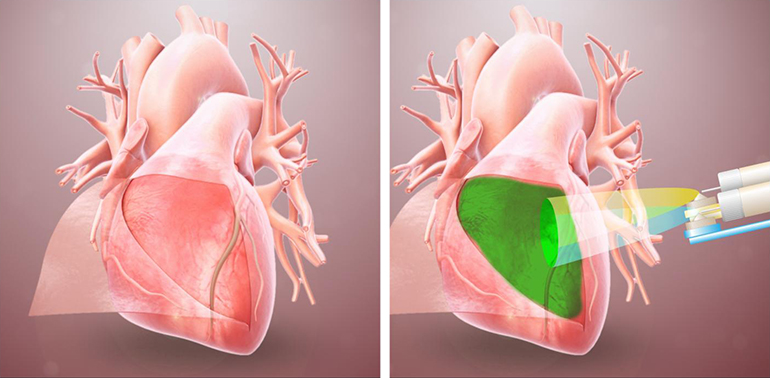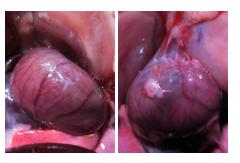
Researchers at University of California San Diego have developed a spray-on hydrogel that forms a protective coating on tissue surfaces, such as the surface of the heart. The new material is intended to prevent the formation of adhesions, where tissues inside the body adhere together abnormally following a surgical procedure. The crosslinked gel persists on the tissue surface for as long as four weeks, protecting the tissue when there’s the greatest risk for adhesions.
Adhesions typically form within the first month after surgery. However, they can interfere with repeat surgeries in the same location, increasing the risk and complexity of such procedures, and can even impair organ function. They can be a particular problem in cardiac surgery, where there is a high level of repeat operations (approximately 20% of cases), such as seen in cases involving children who may require several surgeries to address defects that evolve as the child grows.
At present, there are no FDA approved treatments to prevent or reduce adhesions that form because of heart surgery. “Our work is an engineering solution driven by a medical problem,” said Karen Christman, a researcher involved in the study, in a UCSD press release. “And now it’s poised to significantly improve cardiac surgery, both for adults and children.”

The technology consists of a sprayable hydrogel that adheres to tissue on contact, and forms a durable but soft and flexible coating. The gel is intended to prevent adhesions but should not restrict movement or organ function. As the gel layer disintegrates within 4–6 weeks of application, the tissue is protected for the first month after surgery – the time during which adhesions typically form.
To ensure that the gel remains liquid and sprayable, the researchers deliver it in two parts that form a semi-solid gel layer when they combine on the tissue surface. They designed a special spray device with two chambers to hold each of the gel components, which are sprayed through two different nozzles simultaneously.
The gel components chemically crosslink with each other on the tissue surface to form the protective layer. By tweaking the formulation of the gel, the researchers ensured that it would form a robust and durable layer on the heart without swelling. If the material would swell, it would produce unwanted pressure on the heart and restrict its beating.
So far, the researchers have tested the gel in rodents and in pig hearts, with promising results, and have created a spin out company (Karios Technologies) to further research and commercialize the technology.
Study in Nature Communications: Preventing post-surgical cardiac adhesions with a catechol-functionalized oxime hydrogel
